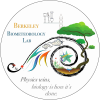Reports
Contents
| Title: | Vaira LED vs SRS NDVI | ||||||||||||
| Date: | 2017-09-07 | ||||||||||||
| Data File: | VR_LEDvsSRS_201709_201804.csv VR_LEDvsSRS_201709_201804midday.csv |
||||||||||||
| Refers to: | VR_met,2046503368,2046503402 | ||||||||||||
|
From 2017-09-07 to 2018-04-25 the homemade LED sensor at Vaira was compared to a pair of Decagon/METER SRS NDVI sensors: sn 2046503368 incoming, sn 2046503402 outgoing. The LED sensor has been installed at Vaira since July 2004. It uses red and near infrared (NIR) LEDs to measure incoming and reflected light. The current signals from the LEDs are amplified and converted to mV to be sampled at 10sec intervals and stored as 30min averages by a Campbell data logger. Reflectances calculated from the raw mV data were compared to reflectances calculated from an Ocean Optics USB2000 spectrometer sn USB2G4461. For red the multiplier is 1.33 and for NIR it is 1.68. See the following for details: Ryu Y, Baldocchi DD, Verfaillie J, Ma S, Falk M, Ruiz-Mercado I, Hehn T, Sonnentag O (2010) Testing the performance of a novel spectral reflectance sensor, built with light emitting diodes (LEDs), to monitor ecosystem metabolism, structure and function. Agricultural and Forest Meteorology. 150, 1597-1606. The SRS sensors are made by Decagon Devices now METER Group. They measure red and NIR at 650nm and 810nm with a 10nm FWHM band pass. They report irradiance as W/m2/nm via a digital SDI-12 connection to a Campbell data logger. These data are also sampled at 10sec intervals and saved as 30min averages. Figure 1. Time series of the raw mV output of the four channels from the LED sensor. Data from times where incoming PAR was less than 25umol/m2 have been removed. Figure 2. Time series of the raw mV output of the four channels from the SRS sensor pair. Data from times where incoming PAR was less than 25umol/m2 have been removed. There are many ways to compare the LED data with the SRS data. The raw incoming and outgoing values can be compared or the red and NIR reflectances (Rref = Rout/Rin and Nref = Nout/Nin) or the calculated NDVI (NDVI = Nref - Rref)/(Nref + Rref) values. The raw radiance values offer the advantage of having a wide range from low values at dawn and sunset versus high values at midday.Â
Figure 3. Linear regressions of the LED raw mV versus the SRS raw W/m2/nm for all times with PAR greater then 25umol/m2. During the early morning and late evening, incoming and outgoing light is similar in value and the calculations for reflectances and NDVI tend to blow up. The SRS sensors seem to be a little more stable during midday but the LED sensor change value throughout the day. It seems that readings from half hours ending at 11:00, 11:30, 12:00 and 12:30 offer relatively stable NDVI values. Also it is interesting that cloudy days offer stable value over the entire day. Zoomed out, there is a large scatter of values. Figure 4. NDVI calculated from all daylight half hours. Times between 11:00 and 12:30 seem to offer the most stable values. There is a large scatter in values especially near sunrise and sunset. Plotting only the midday values cleans up both lines. Now it is clear that the general pattern is the same for both sensors and the difference is a relative constant offset. Figure 5. Time series of midday NDVI values The linear regression of the midday values of the LED based NDVI versus the SRS based NDVI seems good.
Figure 6. Linear regression of the midday values of the LED based NDVI versus the SRS based NDVI This data set shows that the home made LED sensor compares well with the commercial SRS NDVI sensors. It is not necessary to use these relationships to correct the data but might be useful if cross site comparisons are done in the future. |
|||||||||||||
| |

